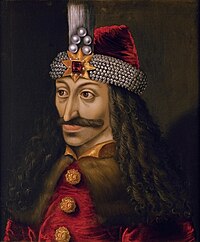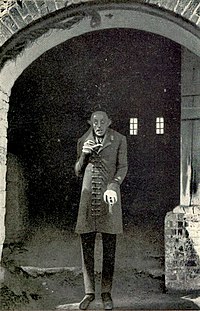Vampiric idealism
Beginning PRESCRIPTIVE
The question that runs through these brief disputatio
is the following: Can there be an ontology of ‘blood’ that
does not immediately become a concern of either Being
or God? Put differently, if one accepts that the concept
of ‘blood’ is irreducible to biology, what then is to prevent
it from becoming reducible to theology? Let us be even
more particular: To what extent is ‘blood’ as a concept always
situated between a biology of a non-ontological ‘blood itself’
and an onto-theology of the blood-beyond-the-bleeding, or
‘after-blood’?
But what comes ‘after blood’? Is it death, decay, and
decomposition, or is it resurrection and regeneration? Is it,
in biological terms, the transformation of the living into the
non-living, from the organic life of molecules to non-organic
matter? Or does it involve a theological re-vitalization of
the resurrected, living cadaver?

Middle DESCRIPTIVE
I have to look in the mirror for some more clues. Nothing is missing. It’s all there. The affectless gaze. The
diffracted grace …
The bored languor, the wasted pallor …
The chic freakiness, the basically passive astonishment, the enthralling secret knowledge …
[T]he chalky, puckish mask, the slightly Slavic look …
The child-like, gum-chewing naivety […] the shadowy, voyeuristic, sinister aura …
The albino-chalk skin, Parchmentlike. Reptilian. Almost blue …
His face was a strong, a very strong, aquiline, with high bridge of the thin nose and peculiarly arched nostrils, with lofty domed forehead, and hair growing scantily round the temples but profusely elsewhere. His eyebrows were very massive, almost meeting over the nose, and with bushy hair that seemed to curl in its own profusion. The mouth, so far as I could see it under the heavy moustache, was fixed and rather cruel-looking, with peculiarly sharp white teeth. These protruded over the lips, whose remarkable ruddiness showed astonishing vitality in a man of his years. For the rest, his ears were pale, and at the tops extremely pointed. The chin was broad and strong, and the cheeks firm though thin. The general effect was one of extraordinary pallor.
‘ghastly tracks and scars and holes are white on white — white
on that pale stomach of his. No red welts. Pale, pale as could

End
An ontology of blood
This also means they can be
destroyed. But what of the creature that cannot be named,
or that is named in its unnamability? The unnamable
creature is also the unthinkable creature. This would be
the B-horror version of Beckett’s L’innomable. In some cases
the unnamable creature is without form, the intrusion of
a raging, inverted hylomorphism. Cold War films such as
The Blob and Caltiki the Immortal Monster exist in a state of
oozing, abject, borderlessness. In other cases the unnamable
creature is without matter, existing as pure (demonic) spirit,
an inverted theophany.
The decadence of immortality
In the face of these implacable enemies, these blood-fiends, only one sentiment may be expressed.

Tagged:
Howdy, Stranger!
It looks like you're new here. If you want to get involved, click one of these buttons!


Comments
Assassin poems, Poems that shoot
guns. Poems that wrestle cops into alleys
and take their weapons leaving them dead
Response after 5 minutes: Okay, so it begins with the transition from corpse to blood-drinking undead and then the description of a pallor'd man vampire and ends with the destruction of the unholy abominations and a tire swing.
Perfect sense.
Baby don't hurt me, don't hurt me no more
now exit, pursued down dark tunnels, spent ammunition on crypt-floor, echoing cries of "GOD HATES ME"